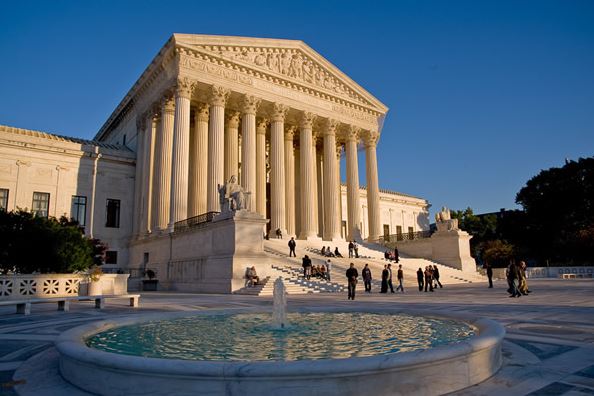BY JOHN ALAN JAMES
The Dodd-Frank Wall Street Reform Act celebrated its fourth anniversary recently with dozens of articles and TV commentaries evaluating its success in preventing another financial crisis. The reviews were mixed and the forecasts for the future of the 36 percent of the mandates yet to be implemented even more controversial.
One thing is very clear, at least to me: The future of the Dodd-Frank and Affordable Care acts are both to be determined by the structure of Congress following the upcoming elections in November. Both have become subject to an intense battle of strong partisan positions.
As a result, the uncertainty of how this legislation will proceed during the remaining two-plus years of the Obama administration ”” coupled with the mixed messages coming from the Federal Reserve about when and how much interest rates will rise ”” forecasts both a continuing and perhaps increasing reluctance on the part of the business sector to invest and create new employment opportunities.

Recent statements by the White House, treasury secretary and top officials of key regulatory agencies forecast major moves to strengthen the regulations and rules of the mandates passed and efforts to push through the remaining items called for by the legislation passed in 2010. For example, Mary Jo White, new head of the Securities and Exchange Commission, predicted a concentrated effort to both smooth out the recognized flaws of regulations passed and quick passage of the remaining mandates.
Congressman Jim Himes, D-Conn., a member of the Financial Services Committee, and thought by many to be the logical successor to the retired chairman, Barney Frank, has had nothing but high praise for the accomplishments of the legislation in protecting citizens from the burden of bailing out financial institutions “too big to fail.” He also has predicted forward movement in finalizing the remaining unfinished elements of the original legislation.
An equally strong position has been taken by Congressman Jeb Hensarling, Republican Chairman of the Financial Services Committee. In a recent speech at the Cato Institute, the Texas congressman predicted not only a Republican House majority blocking any new regulations, but a potential Republican takeover of the majority in the Senate making a major effort to “defang” the regulations already in force.
Hensarling makes some very strong points that should be given consideration by leaders in both the business and local government communities in Westchester and Fairfield counties. For example, he points out the regulations have cost the American economy the benefit of hundreds of millions of dollars available for loans by banks strapped by restrictive rules and mounting costs of staffing compliance units to avoid heavy penalties.
Stiff requirements from the required U.S. and European “stress tests” and the uncertainty on the Bank of International Settlements”™ (Basel III) new requirements for larger asset-backed reserves against risks restrictions have made bank loaning committees increasingly cautious. Many sectors of the business communities in Europe and the United States have faced ever-increasing difficulties in obtaining financing support from banks.
Another factor depressing confidence and loaning capacity has been the huge costs for financial institutions ”” large, midsized and small ”” for building and maintaining new, larger and higher paid staffs organized to comply with the ever-growing demands of the six or seven separate regulatory agencies. The Small Business Council, for example, estimated the cost of compliance for the year 2012 at nearly $1 trillion.
In the past several years the several regulatory agencies, not always in close communication, have increased the frequency and intensity of their regular examination procedures. This, too, has created both costs and strains on organizations. It is estimated that the number of smaller and midsized, mostly community-oriented banks, have had to go under or merge in order to find the capacity to provide compliance organizations large and competent enough to comply with the regulatory demands.
One very troubling aspect of this increased regulatory process has been the decision of major financial institutions to “back down” and agree to huge fines imposed by regulatory agencies in order to avoid having to go to court to defend their positions and/or threats of criminal indictments against key employees. It is estimated that global financial institutions have paid to legal counsel and regulatory agencies over $200 billion since 2007. These are huge sums.
However, little is said in the media about the impact of such “extra costs.” Who does, in fact, foot the bill for these “extraordinary” charges? Shareholders are at the top of the list of those impacted by the fines instead of jail policies made by boards of directors.
Payments for fines in the billion-dollar level (JPMorgan Chase, HSBC, for example) have had a negative share-value impact. Too bad for individual shareholders. What about the pension funds and 401(k) holders of these shares? What about the impact on the balance sheets and the level of assets required for stress tests and meeting Basel III requirements? Loan department managers feel an immediate negative impact.
Then, of course, there are the employee merit increase funds and allocations for promotions that take a hit.
However, one negative aspect of this “over-regulatory cost” is not often discussed in the ordinary press. What has been the impact on the economies of both the United States and Europe of this rush to protect against “banks too big to fail?” Why has there been in truth, negative economic growth. If the Federal Reserve had not purchased over $3 trillion in U.S. government debt and kept the stock markets rising by funding speculators with near-zero interest discount window funds there would have probably been no economic growth at all.
How much “protection” can we afford?
In summary, the election in November will be crucial in terms of the future of regulation. Whether it be regulation of financial institutions, the health care industry, the Keystone Pipeline and energy policy ”” clean air, clean water, carbon tax ”” the battle lines are drawn.
No one will deny that regulation in each of these key areas has been needed. But how much is too much is the question. Some leaders have suggested no matter how the elections turn out it is a time for a pause. Let”™s take the time to review each of the regulations in force and do as several federal judges have ordered: “Go back and do your cost benefit analyses again.”
We face a possible economic crisis if the Federal Reserve sees it has reached its limit in purchasing U.S. government debt in order to keep interest rates low. Rising interest rates in a period of uncertainty about economic and regulatory futures is no boost to confidence, investment and job creation. It truly is a time for a pause in the rush to regulate against failure of financial institutions.
Let”™s not throw the baby out with the bath water.
John Alan James is a professor at Pace University”™s Lubin School of Business and chairman emeritus of its Center for Global Governance, Reporting and Regulation.



















John Reed and Sandy Weill, the former heads of Citigroup, have proposed that Glass-Steagall be re-instated, separating commercial and investment banking — and they were the ones responsible for having it repealed. Well, why don’t bank boards take an objective look at what’s best for the country regarding these things and then self-regulate their institutions accordingly? A former head of the American Bankers Assn. said he regarded banking as a public service. The shareholders are just one of the stakeholders involved in responsible banking and the boards should govern their institutions accordingly. It may well be that federal regulation is a burdensome process and that it’s moving too quickly, enforced inconsistently by a bewildering group of agencies, but the answer is to take the bull by the horns and get boards to self-regulate, maybe with the help of someone like John James.